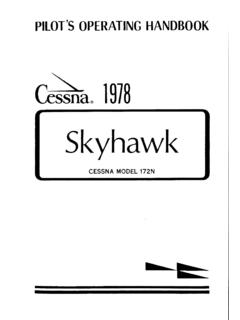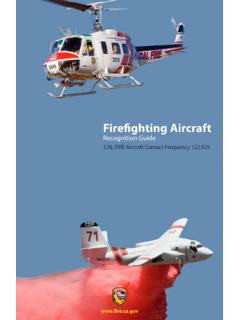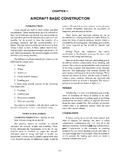Transcription of Underwriting Helicopters - Aviation Insurance
1 Underwriting Helicopters By Jeff Rhodes The ability to take off and land vertically and to remain stationary above a fixed location has been a driving force in aircraft design since the birth of powered flight. The advent of the helicopter in the late 1940 s ushered in great utility that has benefited society ever since. Civilian Helicopters are used extensively to rescue and transport injured patients, to document news, to report traffic conditions, to enforce the law, and to lift heavy objects where land based equipment is not feasible. With this utility comes trade-offs. Flying Helicopters requires specialized training and continuous practice. Helicopers can be maintenance intensive, expensive to operate, and expensive to repair. Because of these trade-offs, they can also be difficult to insure. Underwriting Helicopters Aviation underwriters face several realities when they consider accepting a helicopter risk.
2 Helicopters operate in unforgiving flight regimes Helicopters fly and hover close to the ground, operate from unimproved landing sites and often in close proximity to obstacles. The threat of striking an unseen object with a rotor is always present. Furthermore, Helicopters may be (and often are) operated in low ceilings and visibilities, which can further enhance the threat of striking an unfriendly and immovable object. Learning to fly Helicopters is a relatively high risk activity To a greater degree than fixed wing flight training, helicopter training requires that the student pilot perform maneuvers on the edge of their limited ability. An experienced flight instructor is a must, both to teach the prospective rotorwing pilot the skills and judgment necessary to operate the aircraft as well as prevent accidents during the learning process. Repair is expensive Most components on a helicopter that may be damaged in an accident are extremely expensive to repair.
3 In many cases, the manufacturer stipulates that airframe components are not field repairable and must be replaced if damage is suspected or evident. Furthermore, sophisticated inspection procedures must often be employed in order to determine if any damage exists at all. All of these costs are borne by an Insurance company following an accident or damage-inducing event. Partial losses are rare Due to the large amounts of energy and large moving parts on an in-motion helicopter , many accidents result in total (or constructive total) losses. In a scenario where any moving part of a helicopter contacts the ground or another object, a chain reaction can be set in motion causing severe damage to the rest of the helicopter in the process. Physical damage payouts to helicopter owners and operators are very often for the entire insured value of the aircraft. Because of these Underwriting realities, some Aviation underwriters often steer clear of many opportunities to write helicopter policies.
4 Others seek to avoid the highest risk activities and accept only the more benign, low risk operations. Those insurers that will consider piston-powered Helicopters , commercial operators, utility uses (air crane, firefighting, air ambulance, etc.), or flight training providers charge high premiums and employ high deductibles when insuring such an account. Often the risk of insuring fleets of commercially operated Helicopters must be shared by multiple Insurance companies rather than taken 100% by a single company. Two factors generally determine where an agent will be able to place a helicopter account and what terms and premiums the policy will ultimately carry. Those factors are: whether the helicopter is piston or turbine powered, and the intended use for the helicopter . In general, piston Helicopters are approached more cautiously by the Underwriting community.
5 Perhaps rightly so. Some statistics show the accident rate (per 100,000 flight hours) for piston Helicopters more than 3 times the rate for single engine turbine Helicopters . Several Insurance companies will not quote any piston helicopter . Other companies will competitively quote the more popular piston Helicopters currently in production for most uses. Robinson, Schweitzer and Enstrom helicopter operators will often have more than one Insurance quote to choose from, depending on the use and pilot qualifications. Operators of other makes and older aircraft may find their selection somewhat limited at this time, especially for transitioning pilots and commercial operators. Several special Insurance programs for piston helicopter operators exist. While some programs provide some value, others often provide limited coverage and restrictive policies.
6 In most cases, an agent can find similar or even better terms outside of an established program for a high quality risk. Have your agent investigate Insurance programs available for your type of helicopter account but don t limit your decision to a restrictive program if a more practical placement is available elsewhere. Coverage for most turbine Helicopters is readily available, often from more than one source. Underwriters generally view late model corporate Helicopters , operated by professional pilots, transporting corporate executives, as the least risky scenario. Therefore, this segment is highly competitive, coverage availability is high, and premiums (relatively speaking) are low. As we move from this ideal risk into risks with transitioning owner/pilots, commercial exposure, older aircraft, turbine flight training, and sling load/utility/EMS operations, the capacity begins to shrink and the premiums begin to rise.
7 As with turbine powered fixed wing aircraft, underwriters usually require pilots of turbine Helicopters to undergo annual training with a bona fide training school. Despite popular perception, proper Insurance coverage is available for most helicopter operators. Coverage is almost always more limited and more expensive than that available for fixed wing aircraft owners and operators. It is also less understood by agents and underwriters. When buying helicopter Insurance , choose an agent that understands the helicopter business. That agent is much more likely to know the underwriters that are helicopter oriented and willing to consider a risk logically. That agent also should know how to present your risk to get the best possible quotes and structure the coverage to provide the proper protection for your helicopter operation.
8 Keep up your RPM!







